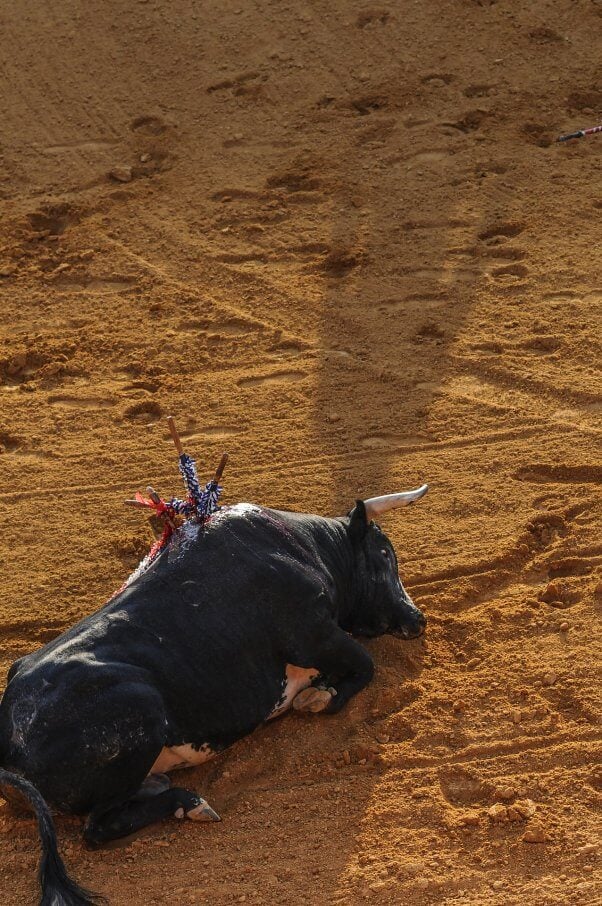From Students to Slaughterers: How Bullfighting Schools Normalize Bloodshed
No one is born with the inherent desire to violently slaughter defenseless bulls—so how does someone become a matador? The bloodshed at bullfights—in which humans torment and mutilate bulls in front of noisy, jeering crowds—can be traced back to the institutions that breed cruelty: bullfighting schools.
What Is a Bullfighting School?
At bullfighting schools, speciesism—or the idea that humans are superior to other species—is embedded in the curriculum. They desensitize impressionable students to the suffering of bulls and other animals. In addition to learning the history of bullfighting, students at these institutions are made to fight young bulls for “practice.” Many bullfighting schools are run by former matadors who want younger generations to carry on their bloody tradition.
Indoctrinating Young People
At many bullfighting schools in Mexico and Spain, students must participate in a toreo de salón, in which they act out a practice bullfight with their classmates. In these training exercises, students dress up as bulls and charge at the “matadors,” who use capes and other props to fight the “bulls.”
View this post on Instagram
“Child bullfighters” are common in Mexico, where there are no age restrictions for participating in bullfights. Many schools there start training children as young as 6 years old to become fighters.
Bullfighting schools in Mexico are typically divided into two age groups: becerristas (children up to 12 years old) and novilleros (children from 13 to 18 years old). As part of their training, becerristas are forced to fight vulnerable bull calves at events called berrecadas. In nature, bull calves are gentle and form extremely close bonds with their protective mothers—but at bullfighting schools, these sensitive animals are routinely provoked, abused, and killed in berrecadas when they’re younger than 2 years old. Then, when they become novilleros, students are made to fight 3- and 4-year-old bulls.
The “education” at bullfighting schools serves just one purpose: to churn out more matadorsto perpetuate the murderous spectacles.
What Happens in a Bullfight?
Every year, humans torture and slaughter thousands of bulls in bullfights—an inaccurate term for events in which bulls are strategically set up to lose. Bulls used in these horrific bloodbaths endure painful, prolonged deaths.
In a typical bullfight, a bull is forced into a ring, where a series of fighters repeatedly stab him. When he’s severely weakened and disoriented from blood loss, the matador enters the ring to deliver the final, fatal blow. If the matador fails to sever the bull’s aorta, he exchanges his sword for a dagger to try to cut the animal’s spinal cord. Many bulls remain conscious but paralyzed while they’re dragged out of the arena.

TeachKind Works to Facilitate Animal-Friendly Education
In stark contrast to bullfighting schools, PETA’s TeachKind program promotes animal rights and compassion in the classroom. By working with teachers and school staff across the U.S., we help foster empathy for all our fellow animals.
Help End Bullfighting
Did you know that bulls have excellent long-term memories and form friendships with other members of their herd in nature? These intelligent, feeling animals want to be left in peace—not maimed and killed for entertainment or in practice sessions.
You can help bulls by taking action to help end bullfighting today:

